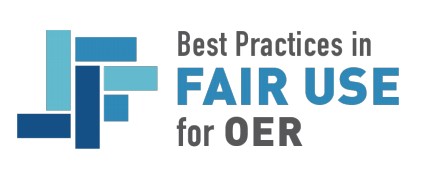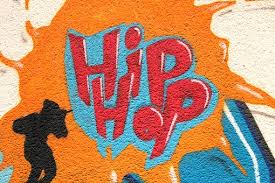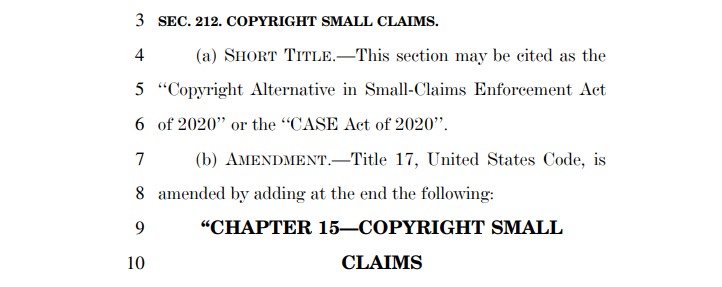For our final post of the 8th Annual Fair Use Week, we are very excited to have two of the authors of the recently launched Code of Best Practices in Fair Use for Open Educational Resources, share their insights on the process and development of this incredible publication. Enjoy! – Kyle K. Courtney
Creation is Not a Closed Book Exam: Developing the Best Practices in Fair Use for Open Educational Resources

by Will Cross and Meredith Jacob
You can learn a lot from which questions people ask you, and which they don’t. As educators and advocates for building openly-licensed textbooks and other open educational resources (OER), we spend a lot of our time at conferences and workshops talking about how to understand and use Creative Commons licenses. As we’ve done presentations over the past few years, however, we noticed that attendees generally listened politely to our presentation and then spent the entire question and discussion period asking pointed questions about how fair use fits in.
As fair use advocates, we love these questions – what’s more fun than digging into a juicy fair use discussion! But bringing discussions about fair use into the open education community raised a second set of questions from creators and especially gatekeepers, and we needed to give people a way forward that went beyond a quick conference Q&A but still didn’t promise individualized legal advice. Some open educators felt unprepared to analyze fair use in particular contexts. Many felt apprehensive about fair use as a whole, often based on anxieties grounded in copyright folklore left over from the era of Napster and LimeWire. Strikingly, many institutional gatekeepers felt unable to make broad, uniform decisions about whether and how to acknowledge fair use at all. While they recognized that some authors were in fact relying on fair use sub rosa, without any tool for systematically understanding and applying fair use they felt that their options were either “allow anything” or “(pretend to) allow nothing.”
Of course, the reality is that every textbook relies to some extent on fair use. It would be practically impossible to build a textbook – certainly a good textbook – without quoting anyone, critiquing anything, or illustrating ideas with text, images, music, or other materials from the real world. Creating anything, including OER, is not a closed book exam. Good pedagogy explicitly builds on the work that has come before and great pedagogy connects to the real world and the lived experiences of the learners it is meant to engage.
Our job, then, was to understand what type of guidance the community needed in order to find a happy medium between “no fair use allowed” and “anything goes.” Fortunately, we had a great tool for exactly this type of work: the Codes of Best Practice in Fair Use. For two decades, the Codes of Best Practice have proved to be an effective tool for many communities to document the repeated professional situations in which they can and must rely on fair use. The Codes are built on a framework that aligns fair use decision making with both the professional mission of the creators and the predictable legal principles of fair use law. These Codes have worked for such disparate communities as documentary filmmakers, librarians, poets, and dance archivists, just to name a few.
As when creating past Codes, we began with a series of interviews with stakeholders across the community. These interviews helped us understand where questions about fair use were creating friction for OER creators, where authors were regularly relying on fair use, what parallel concerns such as accessibility and equity demanded attention, and finally where OER creators were getting information, advice, or even hard rules about the copyright decisions they were making. By early 2020 we felt ready to begin the focus groups that are the signature work of creating Best Practice documents. We felt inspired, connected, and ready to go. Nothing could stop us now . . .
Obviously 2020 didn’t go the way anyone expected, and we paused the process to support educators making the rapid move to fully online instruction with a series of webinars on building resilient materials for teaching and learning. This series also began with a question: “can I read aloud to my students in an online classroom?” The answer, of course, is “reading is most definitely allowed!”
Significantly, what we thought would be a brief detour turned out to be a critical reminder for all of our work, especially the Best Practices: “it’s always an emergency for someone.” While the pandemic brought into focus acute questions about rapid shifts in pedagogy and making do with substandard wifi, for many learners those challenges are chronic and exist beside and in the context of systematic injustice, inaccessible design, and deep digital divides. Relying on fair use as a tool to enable access seemed urgently necessary in that moment of crisis. But those needs are no less urgent and fair use is no less essential for students who face perennial challenges based on inequity and inaccessibility.
As we returned to developing the Code, this core principle continued to animate our work and to resonate deeply in focus group discussions, particularly when we discussed the inadequacy of linking out rather than relying on fair use to reliably incorporate materials. By the late fall we had completed eighteen focus groups and were pleased that our outstanding team of legal reviewers enthusiastically supported the document we facilitated in partnership with the open education community. 
As we celebrate Fair Use Week 2021 we’re excited to share the Code of Best Practices in Fair Use for Open Educational Resources. As with all of the Codes, this resource describes an approach to reasoning about the application of fair use to issues both familiar and emergent but does not provide rules of thumb, bright-line rules, or other decision-making shortcuts. Using the Code to develop OER is also not a closed book exam. Instead, it is designed to empower you to bring together a team of educators, librarians, publishing experts, and others to develop resilient, inclusive OER that engages with and reflects the work that has come before and the world that learners are preparing to enter.
You can learn more about what the Code says, how it works, and how it fits into a global body of educational exceptions in this recorded webinar. We’re also developing a series of community-specific events for open educators, librarians, and legal gatekeepers such as offices of general counsel over the coming weeks. We invite you to work with us to develop guidance and models for applying the Code in specific disciplines and communities through workshops and project development. We’re just getting started with the really fun stuff and we know your questions and real world examples will help make this resource even more meaningful and exciting.
Meredith Jacob serves as the Assistant Director for Academic Programs at the Program on Information Justice and Intellectual Property (PIJIP) at American University Washington College of Law. Her work includes student outreach and advising, curriculum coordination, and academic research and advocacy. Currently her work also includes research and advocacy focused on open access to federally funded research, flexible limitations and exceptions to copyright, and public interest in international intellectual property. Previously, Meredith worked with state legislators on a variety of intellectual property and regulatory issues affecting pharmaceuticals and the privacy of prescription records.
Will Cross is the Director of the Copyright & Digital Scholarship Center in the NC State University Libraries, an instructor in the UNC SILS, and an OER Research Fellow. Trained as a lawyer and librarian, he guides policy, speaks, and writes on open culture and navigating legal uncertainty. As a course designer and presenter for ACRL, SPARC, and the Open Textbook Network, Will has developed training materials and run workshops across the US and for international audiences from Ontario to Abu Dhabi. Will’s current research focuses on the relationship between copyright and open education. In addition to this project he serves as co-PI and co-developer of the IMLS-funded Library Copyright Institute





